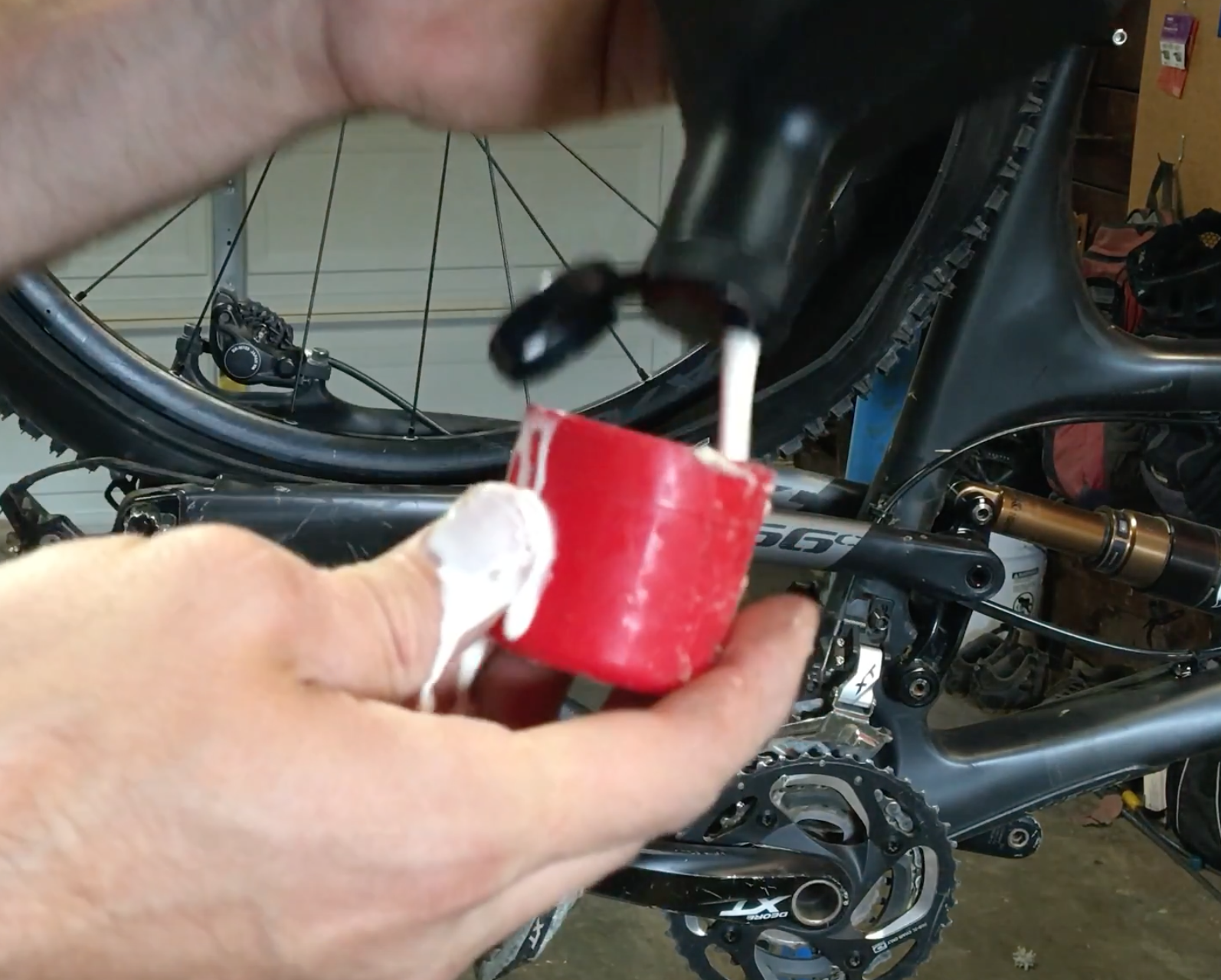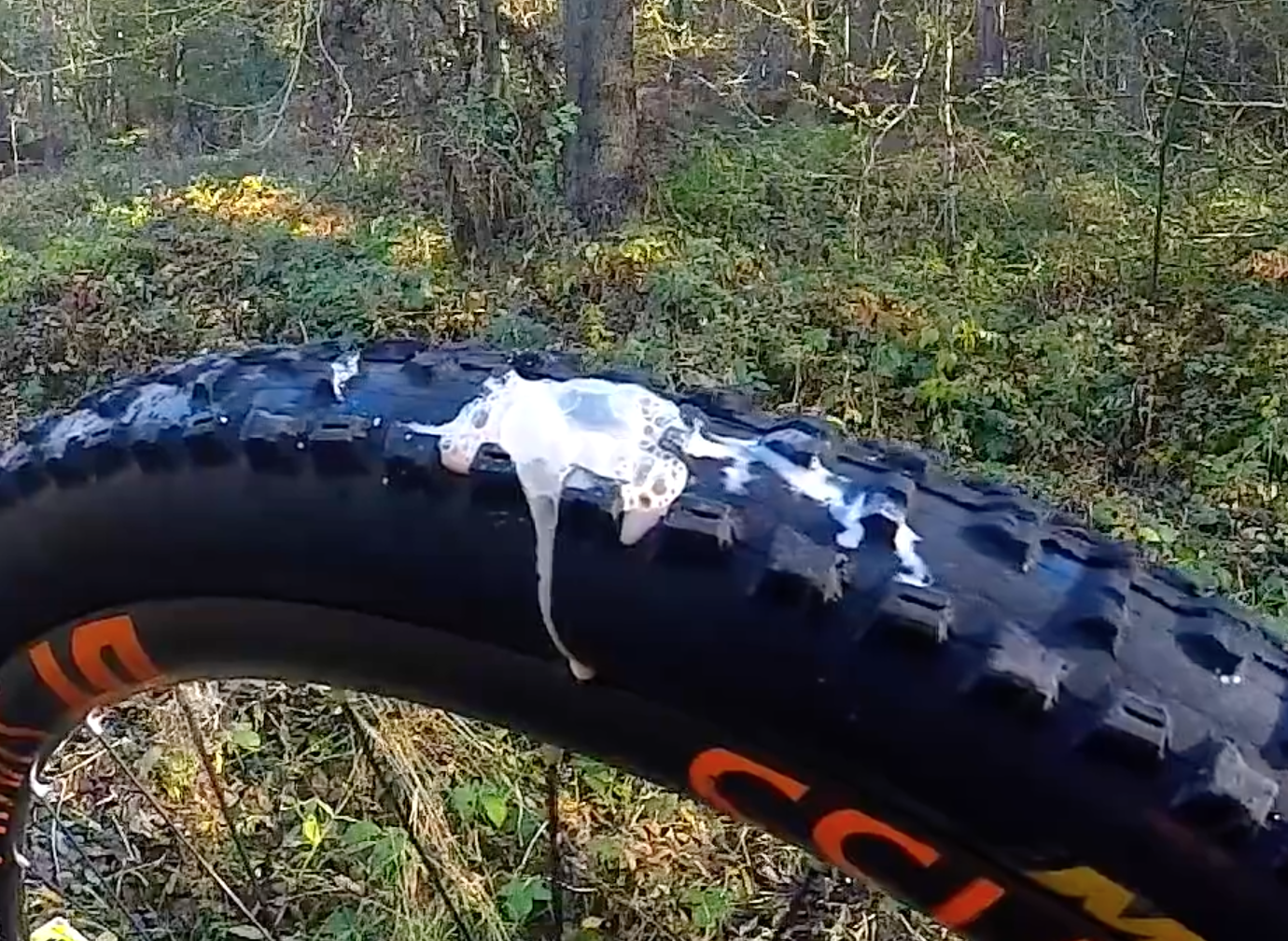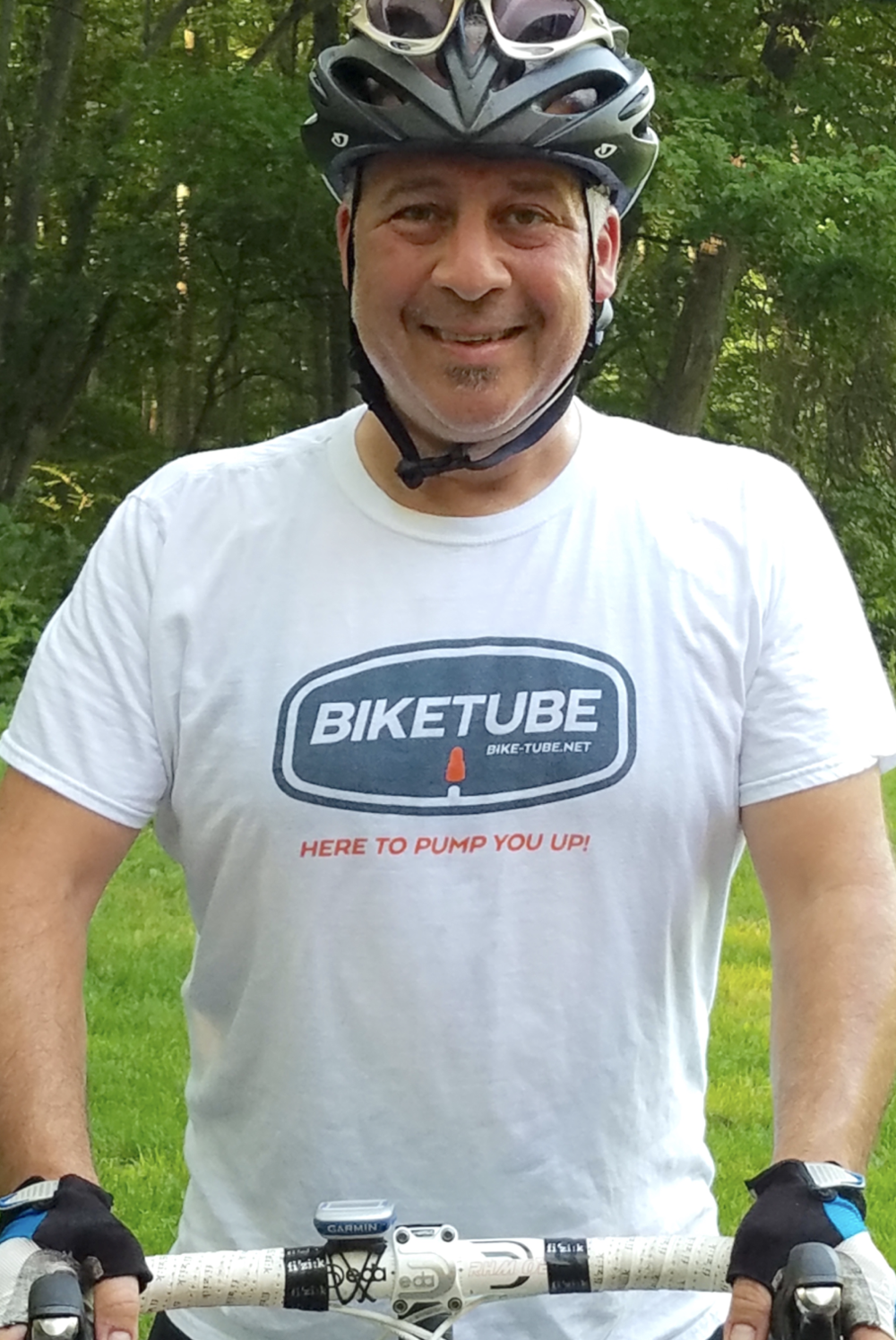BEWARE THE CHEERLEADERS
“Hah!,” sneer the skeptics, “Those guys sell inner tubes, of course they’re throwing tubeless under the bus.”
Actually, our focus at BIKETUBE has always been air, not just inner tubes. We ride and love tubeless…on mountain bikes. We sell tubeless valves and core removal tools, and we’re working on more tubeless products. If you tend to pinch flat or pick up thorns, and don’t mind getting dirty and adding sealant a few times a year, a switch to tubeless mountain is definitely for you! For road, it’s not so clear. We’d like to share some of what we’ve learned.
DO NOT FEAR THE LEARNING CURVE
Tubeless is not rocket science, or even 4th grade science. You simply need a tire and rim made specifically for tubeless, a few ounces of sealant, and a good floor pump, or perhaps compressed air.
Funny thing, once some people make the leap, make their mistakes, get sticky, smelly sealant all over everything multiple times, miss rides because they can’t seat their bead etc., they suddenly become “tubeless cheerleaders”, righteously pontificating in forums and comments sections.
Sealant can fill a hole in a tire as-you-are-riding! Wow wow wow, that is huge, and we believe it’s the only compelling reason to go tubeless on a road bike. There is more to the story, though. Sealant dries up after about 3-4 months (depending on climate and use), and sealant levels needs to be checked several times per year. Otherwise, you’re just riding on heavier, thicker tires, with some extra protection, but without the self-sealing benefit. When you perform the awkward, time-consuming task of checking sealant levels or adding sealant, you will probably get the sticky, smelly stuff on your person, your clothes, the floor, etc. Sealant spills and spews out of bead gaps and holes in tires. If you are not ready to commit to checking and refilling each tire with about $8-15 worth of sealant several times per year, you are better off using inner tubes. Even if there IS sealant sloshing around inside your tubeless tire, a hole of more than a few millimeters, or on the sidewall, probably won’t seal at all, which is why you’ll still need to carry spare tubes. Sealant cannot seal a hole immediately, so at high pressure, you may lose much or all of your air and sealant before a hole is plugged. In all of these scenarios, sealant may spray on your bike and your kit. Mountain bikers get dirty anyway, and don’t use high pressure, so for them this is not such a big deal.
Tubeless road cheerleaders claim lower rolling resistance because they don’t use an inner tube. Not true. Tubeless tires need a thicker layer of rubber inside the casing to hold air, and therefore generally do NOT have lower rolling resistance. Tubeless road is not typically lighter either, once sealant is figured in, because of the same layer of rubber.
Cheerleaders sometimes claim that tubeless road tires handle the same high pressures as an inner tube setup. Fake news. Maximum pressures are usually lower for tubeless, so be sure to check manufacturers’ recommendations. In general, inner tubes help keep the bead under the rim hook, and sealant can act as a lubricant to help a tire pop off.
Tubeless road cheerleaders say they enjoy low air pressure because they don’t need to worry about pinch flats. If the pressure in your road tire is low enough to regularly pinch flat tubes, it’s too low! Not only are you significantly slower in all but the roughest terrain, but you also risk losing control in high-speed corners. Pinch flat protection, and the maximum traction provided by low pressure, are major benefits for mountain bikes, not so much for road.
IN THE END…
Punctures often have more to do with luck than your choice of tubes or tubeless. The sidewall of a tubeless road tire may tear on the second ride, yet a thin-wall Butane inner tube may go a full season on terrible roads. We highly recommend trying a 25mm Continental Grand Prix 4000S tire with a pair of our Butane inner tubes at 90 p.s.i. minimum. This setup provides good comfort and excellent puncture protection. We bet you’ll stay cleaner, save time and money, go fast, have fun, and not be disappointed.
Stephen Cuomo is the owner of BIKETUBE. He’s led product teams at major cycling brands, worked beside world-class professional cyclists, and competed in all disciples of racing for decades.



